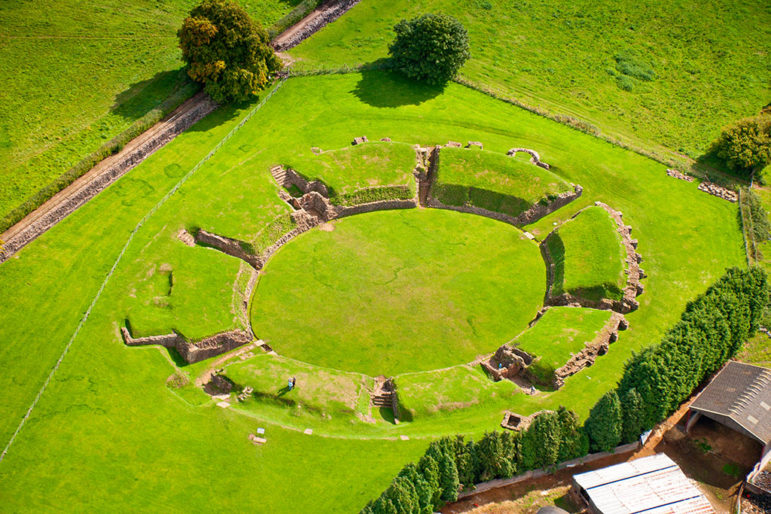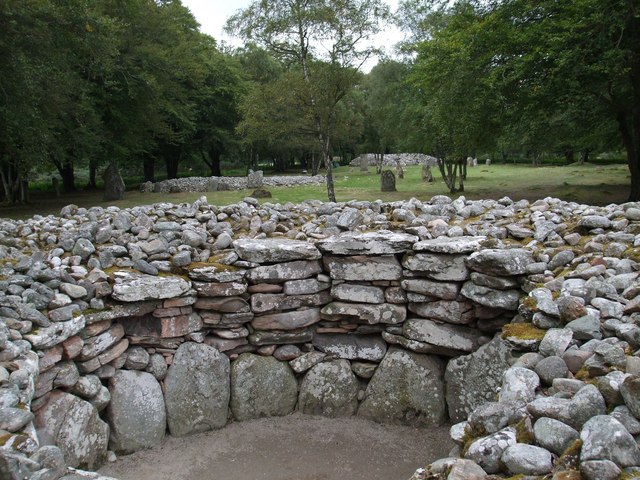Severe damage has been caused to a Bronze Age burial mound near Newport in Wales at some point between Christmas 2019 and the New Year. The mound in Wentwood Forest, which is owned by the Woodland Trust, has been damaged by off-road vehicles which have churned up the earth around and on it and covered it in tyre tracks.
In #WentwoodForest with @cadwwales and @CoedCadw. Investigating appalling damage caused to a #BronzeAge burial mound by off road vehicles. Immediate intervention measures being introduced to prevent further damage. Any information call 101 #HeritageCrime reference 2000006156 pic.twitter.com/UD6sHGxEzB
— Gwent Police | Rural Crime Team (@GPRuralCrime) January 7, 2020
Gwent Police Rural Crime Team are investigating and are putting protective measures in place around the mound, which is in the region of 3-4,000 years old. The police say that the damage would have taken only a few minutes. Damaging such ancient monuments is a criminal offence under the Ancient Monuments and Archaeological Areas Act 1979.
Site manager Rob Davies said:
There has, unfortunately been an on-going problem with damage to this and similar features within Wentwood. The Trust has been spending around £1,500 a year to try to keep vehicles way from them, and following this damage, we will be undertaking further work.
Wentwood Forest itself is the largest ancient woodland in Wales and the ninth most extensive in the UK. It encompasses not only the burial mounds, but also a stone circle and a megalithic alignment, and is thus of considerable interest to British pagans. Grey Hill, where the stone circle is located, may also be the site of a Bronze Age tomb. It has been claimed that some of the stones align with the midwinter solstice, but this assertion has been contested.
The area has a somewhat lawless history, having been held by the Lords of Chepstow as a hunting preserve: the Royal Forest of Wentwood had its own forest laws and a poacher was hanged as recently as 1829 for the violation of these. Even more recently, an illegal rave took place here in 2007. The authorities have done their best to restrict vehicle access, but with limited success, as the recent vandalism shows.
Sadly this is not the only example of damage caused to ancient monuments in Wales, with stones being removed from the Roman amphitheatre at Caerleon in May 2019. Gwent Police say that in addition, staff have been personally threatened by vandals when confronting them at the site.

Aerial view of Caerleon Roman amphitheatre, Newport South Historic Sites [Image credit: CADW – directly from Visit Wales; agents of CADW, CC BY-SA 3.0]
PC Mat Andrews, speaking on heritage crime, said: “On the face of it this damage may appear minor, but given the historic importance of these sites the cost of these acts is unmeasurable. The cumulative impact of such minor incidents over a prolonged period of time may have catastrophic consequences. Ancient monuments such as this are our link to our rich history and should be a source of pride.”
Heritage organisations such as Cadw in Wales have an ongoing problem in securing ancient sites, which may be remote, potentially unstaffed during the day and certainly at night, and which may therefore be open to abuse. The Wild Hunt reported last year on vandalism at Wayland’s Smithy in Wiltshire, for example. In Scotland, Historic Environment Scotland and the Institute of Sustainable Heritage at University College London are working on a two-year project to monitor abuse of ancient sites by encouraging the general public to upload images of monuments so that any future damage can be more easily evaluated.
The Monument Monitor project involves 20 sites, including Caerlaverock Castle near Dumfries, the Pictish Maiden Stone in Aberdeenshire, and the ancient burial site of Clava Cairns, where in 2017, stones were dislodged and graffiti was inscribed on a rock.

Clava Cairns – Image credit: Ronnie Leask, CC BY-SA 2.0
Vandals might do well to think twice before they engage in this kind of activity, and not just because of the law. In one case of minor vandalism at Clava Cairns 17 years ago, a Belgian tourist took a stone from one of the cairns as a souvenir. He later returned it to Inverness Tourist Information Centre by post, claiming that the theft had caused his family to become cursed: his daughter had broken her leg, he himself had lost his job and then broken his arm, and his wife had become seriously ill. (Sympathy among Pagan readers is likely to be limited.)
It is to be hoped that projects such as Monument Monitor, and the overall protection of ancient and sacred sites throughout the British Isles, will continue to develop during the course of the 2020s.
The Wild Hunt is not responsible for links to external content.
To join a conversation on this post:
Visit our The Wild Hunt subreddit! Point your favorite browser to https://www.reddit.com/r/The_Wild_Hunt_News/, then click “JOIN”. Make sure to click the bell, too, to be notified of new articles posted to our subreddit.